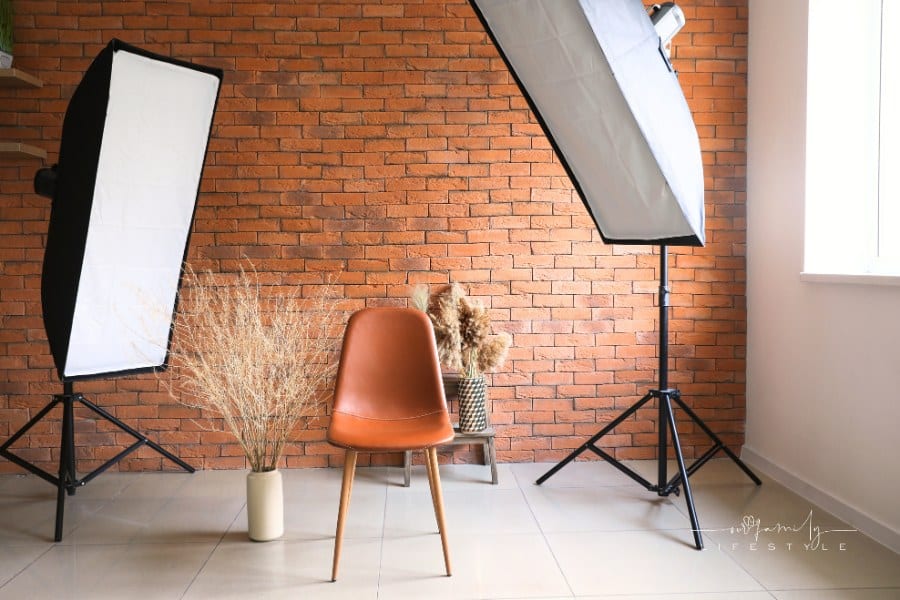Top Tips for Planning a Studio Shoot
Planning a photo shoot can send photographers and organizers into a slew of logistical considerations, from managing natural light to preparing for unpredictable weather.
Each location comes with its own challenges as well, which can impede the smooth shooting process, as well, making photographers long for a more controlled shooting environment.
As such, a studio shoot can be a popular alternative to some.

Planning a Studio Shoot
By taking photos or videos in a studio, you can have a more comfortable and customizable environment that can cater to various creative needs and visions.
It still takes time, effort, and creativity, but the process may be a little easier.
For those considering studio photography for their next photo shoot, here are some practical tips to navigate through the planning and execution effectively:
Define the Concept of the Shoot
Having a clear concept is the foundational step in planning a studio shoot.
This clarity steers all ensuing decisions, from choosing the props to the nuances in post-production, aligning them seamlessly with the envisioned theme.
For example, a high-fashion concept will require different resources and approaches compared to a casual, family-style shoot.
Having a definite concept ensures that the entire team understands and works towards a unified goal, bringing cohesiveness to the project.
Clear objectives also help in efficient resource allocation, avoiding unnecessary expenses and efforts on elements that do not align with the central theme.
Create a Mood Board
A mood board can help planners and photographers consolidate ideas, inspirations, and the desired aesthetic.
It aids in maintaining stylistic coherence throughout the shoot, avoiding contrasting elements that may disrupt the visual harmony.
If you’re planning a summer collection shoot, for instance, the mood board might consist of vibrant colors, airy compositions, and dynamic poses.
These elements guide the selection of outfits, makeup, and props, ensuring that each component resonates with the summer vibe.
Select the Right Studio
Choosing an appropriate studio is crucial for bringing your creative vision to life.
The studio should complement the shoot’s requirements and provide the necessary facilities, space, and ambiance.
Also take into consideration the location, availability of equipment, and the available space.
A strategically located studio with complete facilities can improve the shooting experience and conditions.
If you’re not sure where to start finding a good photo studio, Los Angeles boasts a variety of high-quality and versatile spaces.
From large, well-lit spaces perfect for brand shoots to smaller, intimate studios ideal for portraiture, you’re sure to find a studio specifically designed to accommodate your photographic needs.
Prepare Your Equipment
Proper preparation of equipment can mitigate the risk of technical issues on the day of the shoot.
Thus, it is important to conduct a pre-shoot equipment test prior to the actual shooting date.
It would also be helpful to have backup equipment on standby to ensure that the shoot can proceed unhindered even if some equipment malfunctions.
Choose Appropriate Models and Stylists
If you are shooting with models, select those who are compatible with the shoot’s theme.
Also, select stylists who are on good terms with the models to ensure a harmonious collaboration and an enriching creative process.
This synergy between models and stylists brings the concept to life more effectively, enhancing the authenticity and impact of the visuals.
It also creates a more enjoyable and fruitful working experience for everyone involved.
Develop a Shot List
A well-structured shot list outlines the desired compositions, angles, and frames, all of which ensure a systematic workflow.
Having a shot list also helps in time management, preventing overlooked shots and rushed executions.
Moreover, it also serves as a quick reference, enabling easy adjustments to capture unplanned, spontaneous moments.
That said, make it a point to balance adherence to the shot list with flexibility for richer creative exploration.
Set-Up Equipment in Advance
Allocate time to arrange equipment and fine-tune lighting to help avoid delays and ensure high-quality captures during the shoot.
A well-organized studio also sets a professional tone and creates a conducive atmosphere for focused and creative work.
Prioritizing cleanliness and order while setting also enhances safety, minimizing the risk of accidents due to cluttered cables or misplaced equipment.
Monitor Your Progress
Regularly monitoring your progress against the shot list ensures alignment with the planned concept and allows for timely adjustments.
It also helps in maintaining focus and managing time effectively, avoiding last-minute rushes and compromises on quality.
All in all, it fosters a dynamic and responsive working environment where creativity is fluid and the team can collectively steer the project to its fullest potential.
Backup Your Photos
Securing your work through immediate and multiple backups is imperative to avoid incidents that may cause your files to be corrupted or lost.
Employing a variety of storage devices provides peace of mind, allowing the photographer to concentrate more on creative execution.
It also demonstrates professionalism and respect for the work and the collaborators, reinforcing reliability and trust.
Reflect and Learn From Feedback
After conducting a successful shoot, reflect on your experience; also, consider the feedback from the team and clients. These are crucial for continuous improvement and learning.
Embracing constructive criticism and extracting learning points from them refines skills and approaches for future projects. It also fuels professional growth and cultivates a mindset of humility and openness to learning.
Snap Away at the Studio
Planning a successful studio shoot involves meticulous preparation, effective communication, and thoughtful reflection.
Fortunately, organizing shoots at the studio does not have to be complicated with these straightforward and efficient tips designed to assist photographers and planners in navigating the complexities of studio photography.
Implementing them will not only make the process smoother but also enhance the overall creative experience and make all your efforts worth it.


